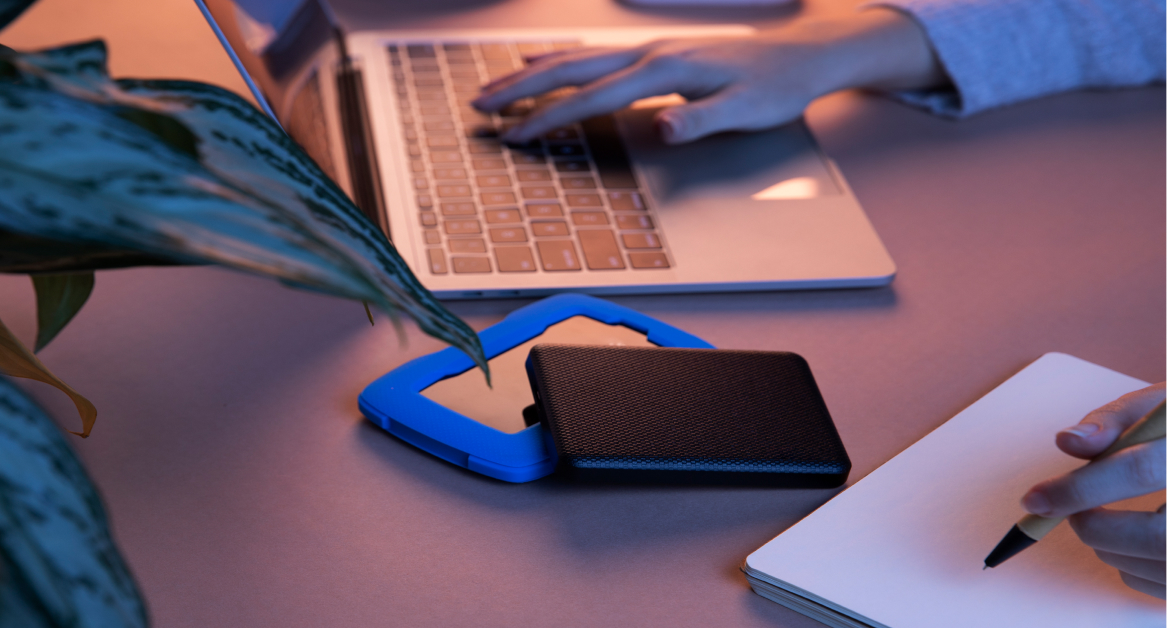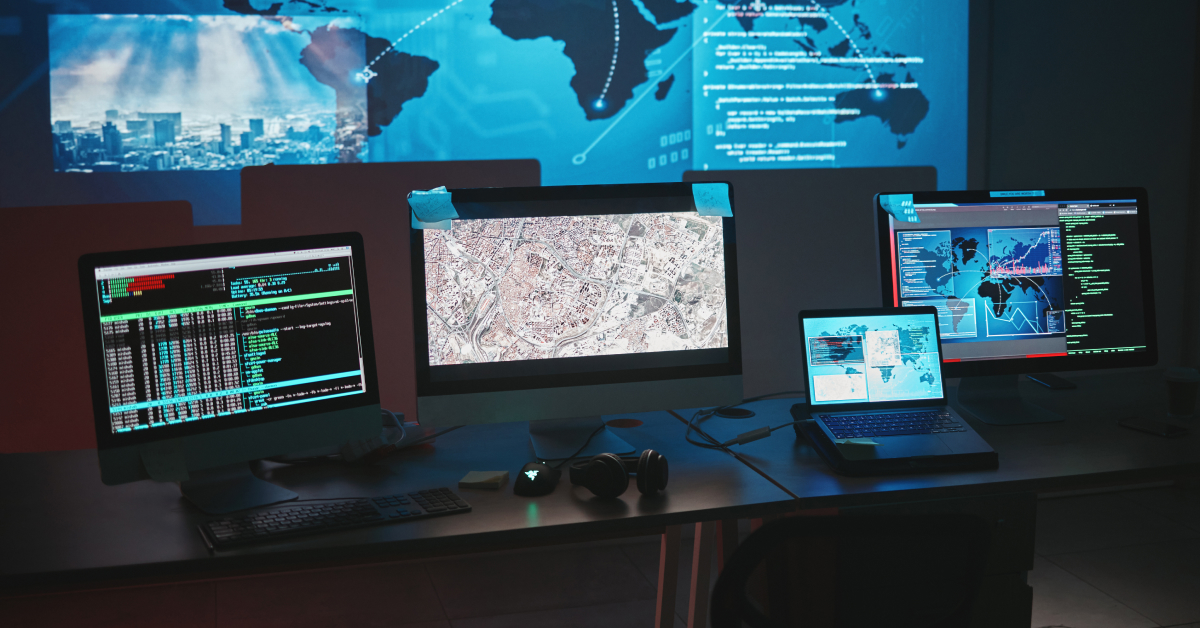When your business scales, so do your IT needs. Whether you’re equipping a remote workforce, setting up a new office, or replacing outdated devices, buying bulk laptops can seem like a cost-effective decision.
However, before making a large investment, it’s crucial to consider the hidden costs, particularly depreciation.
Depreciation affects your laptop purchase’s resale value, tax implications, and long-term ROI. Without a solid plan, companies can end up with outdated, low-value devices faster than expected.
In this guide, we’ll explain why businesses buy laptops in bulk, how depreciation impacts costs, and strategies to minimize losses.
Let’s investigate. 🔎
Why businesses buy laptops in bulk
For companies with a growing workforce, buying laptops in bulk isn’t just about convenience—it’s a strategic decision that impacts costs, productivity, and IT management. Here are some key reasons why businesses opt for bulk laptop purchases:
Cost savings
Buying in bulk often means accessing volume discounts from manufacturers or vendors. Many suppliers offer lower per-unit prices for bulk orders, reducing overall procurement costs.
Additionally, businesses can negotiate better warranties, service agreements, and extended support when purchasing multiple devices at once.
Standardization and efficiency
Standardizing laptops across a company ensures that all employees use the same models, operating systems, and software. This makes IT support, troubleshooting, and device management much easier, reducing downtime and maintenance complexity. It also streamlines onboarding since new hires receive pre-configured laptops with the necessary tools and security settings.
Inventory control and future-proofing
Businesses planning for expansion often buy extra laptops in bulk to accommodate future hires. Keeping additional devices in stock helps avoid delays and ensures that employees always have the necessary equipment without waiting for procurement cycles.
Tax and financial benefits
In many regions, businesses can claim tax deductions on IT equipment purchases. However, these tax benefits come with depreciation considerations, which we’ll discuss in the next section.
What is depreciation, and why does it matter?
When businesses buy laptops in bulk, the upfront cost isn’t the only financial factor to consider. Over time, these devices lose value, a process known as depreciation. Understanding how depreciation works helps businesses manage budgets, tax deductions, and asset lifecycles more effectively.
How depreciation affects business finances
Depreciation is the gradual decline in a laptop’s value as it ages. This impacts businesses in several ways:
- Lower resale value – As laptops age, their market value decreases, making it harder to recover costs through resale.
- Tax implications – Many countries allow businesses to deduct the depreciation of IT assets from taxable income, reducing the tax burden.
- Upgrade planning – Knowing the depreciation rate helps businesses determine when to replace or lease new laptops.
Factors that influence laptop depreciation
Several factors affect how quickly laptops lose value:
- Brand and model – High-end business laptops often hold value better than budget models.
- Usage and condition – Devices used heavily or without proper maintenance depreciate faster.
- Technological advancements – Rapid innovation in processors, battery life, and security features can make older models obsolete quickly.
- Market demand – A device that was once in high demand may lose value when newer models with better features are released.
The hidden costs of depreciation in bulk laptop purchases
Depreciation doesn’t just affect the book value of a company’s laptops—it also brings hidden costs that can impact long-term IT budgets, productivity, and security.
Loss of resale or trade-in value
Laptops lose value quickly, with some models depreciating by 30–40% within the first year. By the time a company decides to refresh its fleet, the resale or trade-in value of bulk-purchased laptops may be significantly lower than expected. This limits options for recouping costs or reinvesting in new technology.
Increased maintenance and repair costs
As laptops age, they are more prone to hardware failures, battery degradation, and performance slowdowns. Keeping older laptops functional often requires additional spending on repairs, replacements, and IT support.
In some cases, these costs may exceed the price of simply replacing the devices with newer models.
Reduced employee productivity
Older laptops may struggle to keep up with modern software demands, leading to slow processing speeds, system crashes, and compatibility issues. Employees working with outdated hardware often experience frustration and lost productivity, which can have a ripple effect on overall business efficiency.
Security vulnerabilities
Laptops that are no longer supported with security updates become an easy target for cyber threats. Businesses must invest in additional cybersecurity measures or risk exposing sensitive data to breaches.
For companies handling confidential information, such as finance or healthcare organizations, the cost of a data breach can be far greater than the savings from bulk purchasing.
How to calculate depreciation for laptops
There are several ways to calculate depreciation, with each method offering different financial insights.
Straight-line depreciation
The straight-line method is the simplest and most commonly used approach. It evenly distributes the laptop’s cost over its useful life.
Formula:

- Purchase price – The original cost of the laptop.
- Salvage value – The estimated resale or trade-in value at the end of its useful life.
- Useful life – The expected lifespan of the laptop (typically 3–5 years for business use).
Example: If a laptop costs $1,500, has a salvage value of $300, and a useful life of 3 years, the annual depreciation is:
1500 – 3003 = 400
This means the laptop loses $400 in value each year.
Declining balance depreciation
The declining balance method applies a fixed percentage of depreciation each year, making the first few years more expensive in terms of lost value.
Formula:

- This method reflects the reality that laptops lose the most value in their first 1–2 years.
Tax benefits and depreciation schedules
Many countries allow businesses to deduct depreciation from taxable income, reducing overall tax liability. Governments often provide specific depreciation schedules for IT assets, so businesses should check local regulations to maximize benefits.
By understanding depreciation, companies can make more informed decisions when buying bulk laptops and implement strategies to minimize financial losses.
5 strategies to mitigate the impact of depreciation
1. Consider laptop leasing instead of purchasing
One way to avoid upfront costs and reduce depreciation risks is through laptop leasing. Instead of buying, businesses can lease laptops for a fixed period, ensuring that employees always have access to up-to-date hardware without the burden of ownership.
Benefits of leasing laptops:
- No large capital investment required
- Regularly upgraded devices to prevent obsolescence
- Maintenance and repairs often included in leasing agreements
- Predictable IT expenses for easier budgeting
Companies like Esevel offer flexible leasing options, making it easy for businesses to scale their IT infrastructure without worrying about asset depreciation.
2. Buy refurbished laptops for cost-effective upgrades
For businesses that need to refresh their fleet while keeping costs low, buying refurbished laptops is a smart alternative. Certified refurbished devices are often significantly cheaper than brand-new models while still meeting performance and security standards.
Advantages of buying refurbished:
- Lower acquisition costs with minimal performance compromises
- Reduced depreciation since the biggest drop in value happens in the first year
- Environmentally friendly option by extending device lifecycles
Esevel provides certified refurbished laptops that meet business-grade standards, helping companies cut costs while maintaining performance.
3. Extend laptop lifespan with proper maintenance
A well-maintained laptop retains value longer and reduces the frequency of replacements. Businesses should implement best practices to maximize the lifespan of their IT assets.
Best practices for extending laptop lifespan:
- Regular software updates to maintain security and performance
- Using cooling solutions to prevent overheating
- Replacing batteries instead of entire devices when power issues arise
- Encouraging employees to follow proper handling and storage procedures
4. Implement a structured device refresh strategy
Instead of replacing all laptops at once, businesses can stagger upgrades based on performance and lifecycle data. A structured refresh strategy ensures cost control and smoother transitions without sudden capital expenses.
Key considerations for an effective refresh strategy:
- Set a standardized refresh cycle (e.g., every 3–4 years)
- Track device performance and repair frequency
- Trade in or resell laptops before their value drops too low
5. Use an IT asset management platform
Managing bulk laptops efficiently requires real-time tracking and lifecycle management. An IT asset management platform like Esevel helps businesses:
- Monitor laptop performance and security
- Automate device provisioning and deprovisioning
- Ensure compliance with security policies
- Track warranties and optimize refresh cycles
Key questions to ask before buying laptops in bulk
Before making a bulk laptop purchase, businesses should ask the right questions to ensure they are making a cost-effective and future-proof decision. Here are some key factors to consider:
What is the primary use case for these laptops?
Different teams have different requirements. Developers, designers, and data analysts may need high-performance laptops with powerful processors and large storage, while customer service and sales teams may only need lightweight, budget-friendly models.
Should we buy, lease, or consider refurbished laptops?
- Buying is ideal for long-term ownership but comes with higher depreciation costs.
- Leasing offers flexibility and predictable costs while ensuring devices are always up to date.
- Buying refurbished helps reduce upfront costs and minimizes initial depreciation losses.
For companies looking to scale without major upfront investments, Esevel’s leasing and refurbished laptop options provide a cost-efficient alternative.
How will we handle device management and security?
Bulk laptop purchases require a device management plan to ensure security, compliance, and efficiency. Companies should consider:
- Mobile device management (MDM) solutions to enforce security policies
- Remote monitoring and updates to keep software and security patches up to date
- Data protection measures such as encryption and secure access controls
How will we ship and distribute laptops to employees?
For companies with remote or hybrid teams, logistics and shipping can be a challenge. It’s important to plan:
- How to ship a laptop internationally for distributed teams
- Local warehousing or storage options to avoid delays
- Pre-configured devices that are ready to use upon delivery
Esevel simplifies global laptop procurement and delivery across 88+ countries, ensuring employees receive their devices on time.
What is our plan for upgrading or retiring old laptops?
To avoid excessive depreciation and performance slowdowns, businesses should:
- Set a laptop refresh cycle (e.g., every 3–4 years)
- Explore trade-in or resale programs before devices lose too much value
- Implement certified data wiping to ensure security when decommissioning laptops
Maximizing value when buying bulk laptops: A smarter approach
Buying laptops in bulk can help businesses save costs, standardize IT infrastructure, and streamline operations, but depreciation and hidden costs can quickly eat into those savings. Without a clear strategy, companies may end up with outdated devices, high maintenance costs, and security risks.
To make the most of bulk laptop purchases, businesses should:
- Consider leasing or buying refurbished laptops to reduce upfront costs and depreciation losses
- Implement a structured refresh cycle to optimize IT spending and avoid sudden expenses
- Use an IT asset management platform to track, secure, and maintain devices efficiently
- Plan for international shipping and logistics to support a distributed workforce
Esevel helps companies simplify IT procurement, device management, and support across multiple locations. Whether you need bulk laptops, leasing options, international shipping, or IT security solutions, Esevel provides an all-in-one platform to handle it seamlessly.







